AUSTRALASIAN
Tropical & Subtropical Moist Broadleaf Forest (Rainforest)
The Australasian forest is (on a global scale) relatively small area of rainforest, but has a high range of endemics.
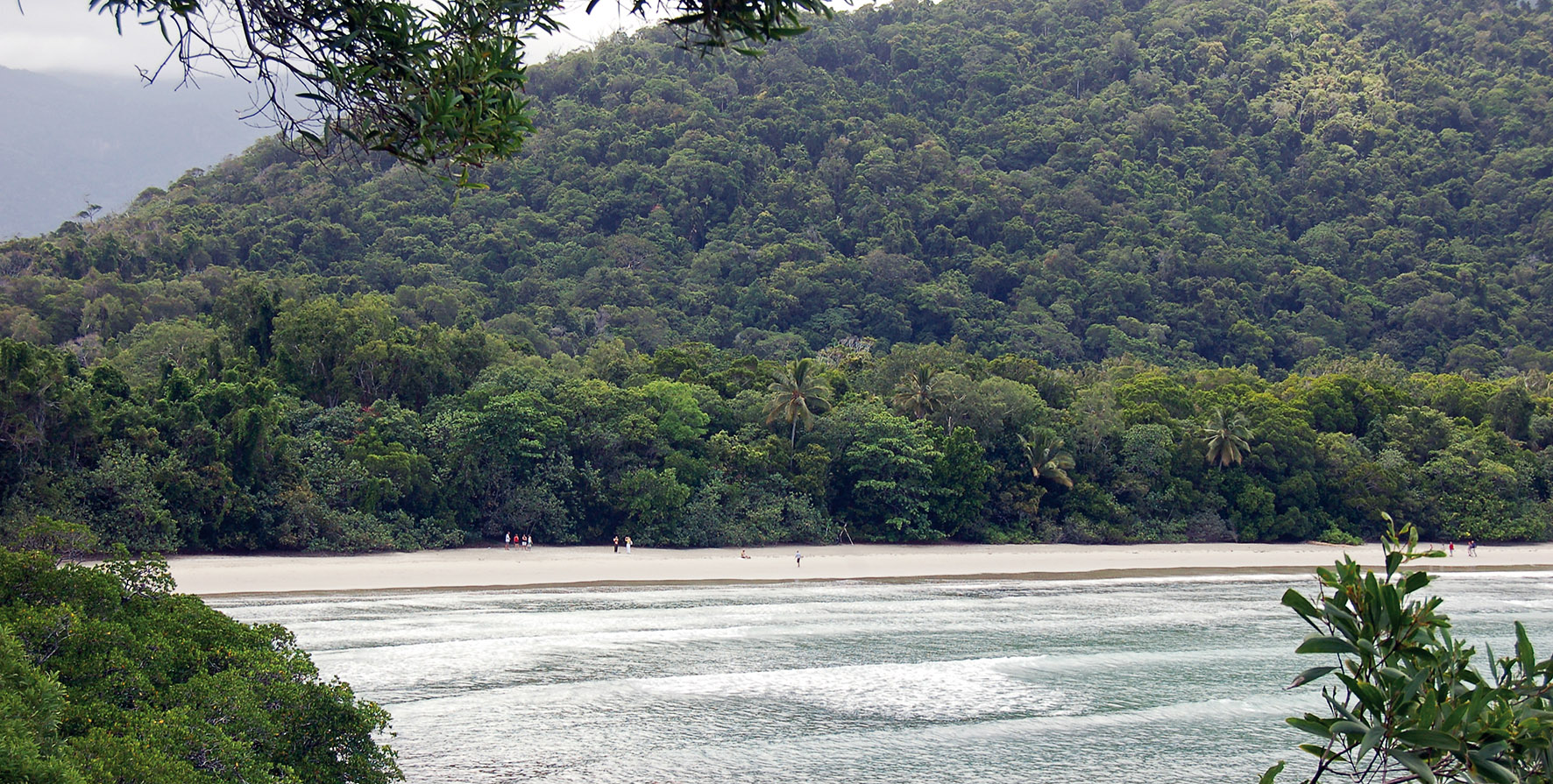 the lowland rainforest at Cape Tribulation, Australia.
the lowland rainforest at Cape Tribulation, Australia.These forests are found throughout the island of New Guinea, north-east Queensland, and to the islands of Melanesia, including the Solomons, Vanuatu and New Caledonia. These forests also supply many of the species that have ended up in Fiji and beyond (Fiji and eastwards is included in Rainforest of Oceania).
The lowland 'jungle' forest is still intact and found around the New Guinea coast, and is protected in small patches in Australia in the Daintree and north Queensland. There is upland rainforest in the Atherton Tablelands inland of Cairns, and even higher altitude forest in the valleys of central New Guinea. Patches of subtropical rainforest are found all the way down along the east coast until the southern border of Queensland.
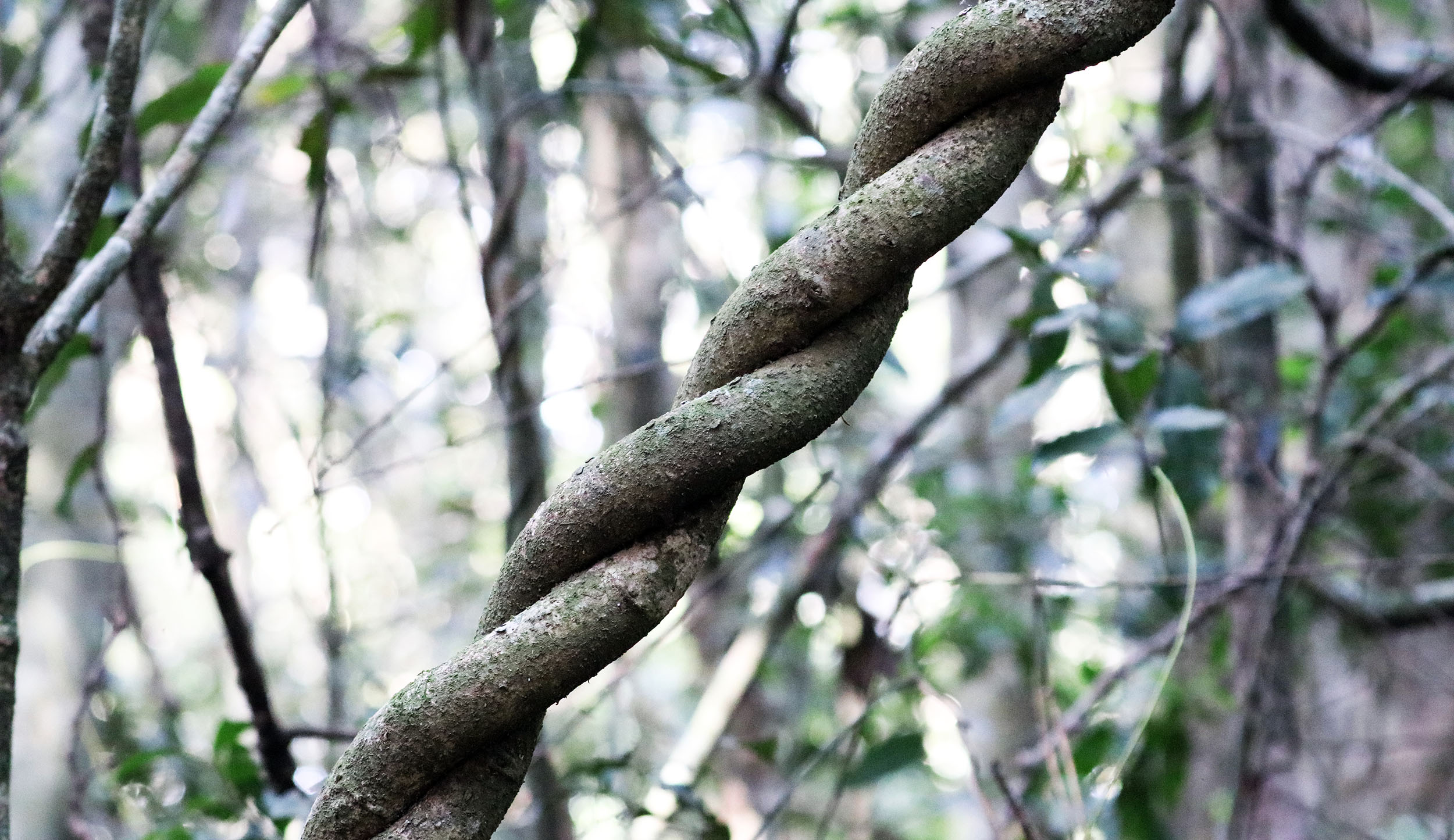 (O'Reillys Lodge)
(O'Reillys Lodge)The family Proteaceae is mostly a family of plants found growing in sandy soil heathlands in southern Africa and south-west Australia, but with some interesting species in the rainforest along the east coast of Australia, including some of the dominant canopy trees.
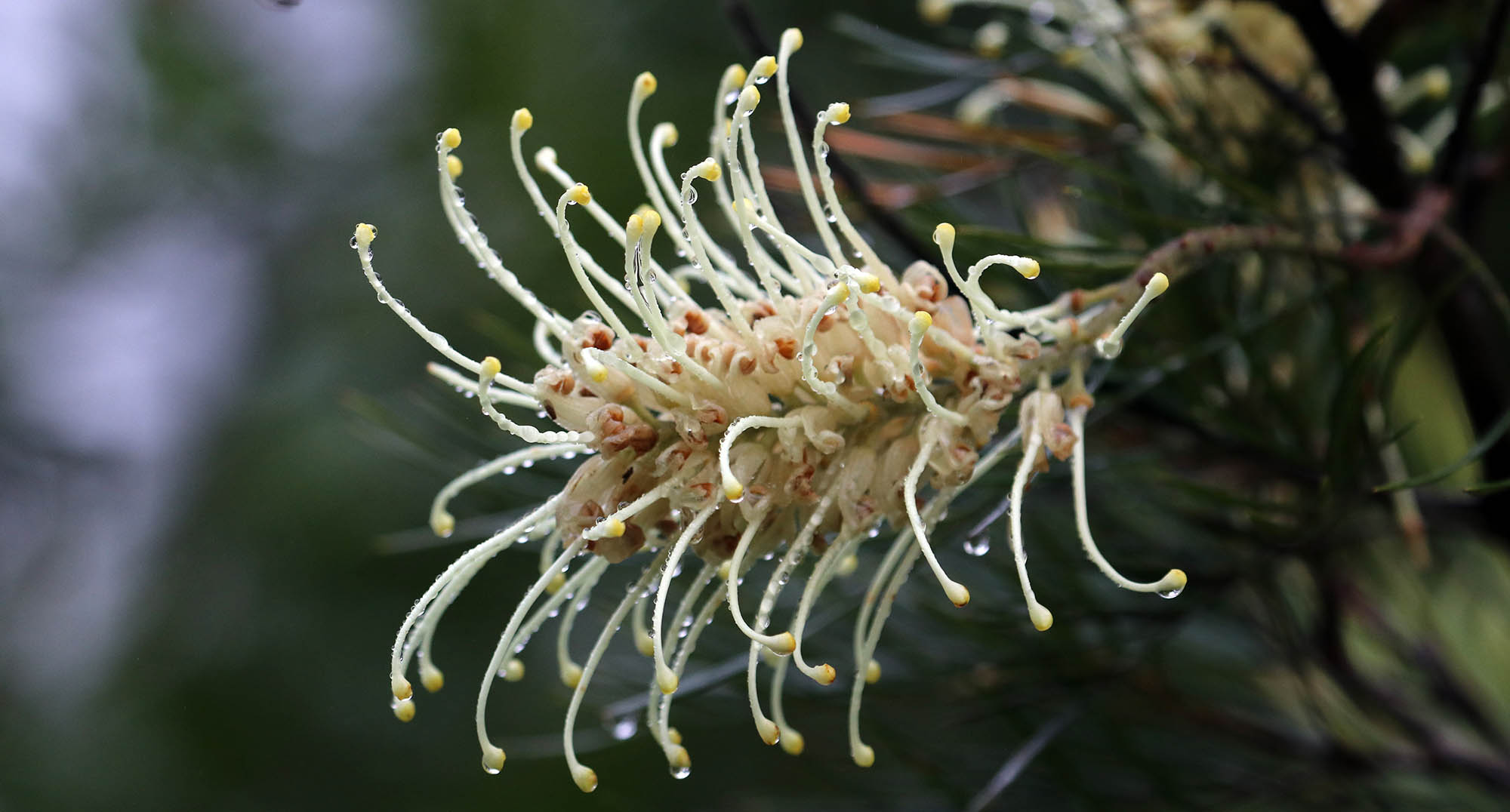 (Possum Valley)
(Possum Valley)The genera in the rainforest include:
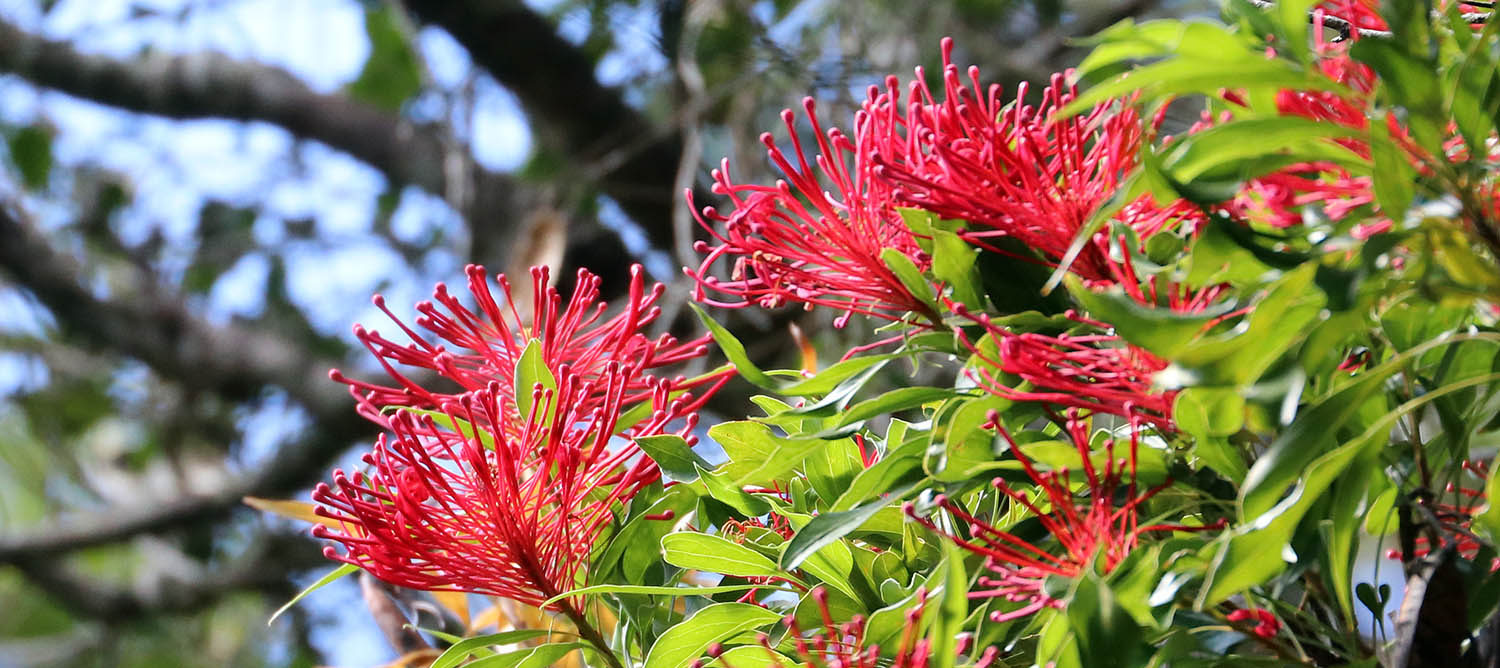 Alloxylon spp. 'Waratah Trees' (O'Reillys, Queensland)
Alloxylon spp. 'Waratah Trees' (O'Reillys, Queensland)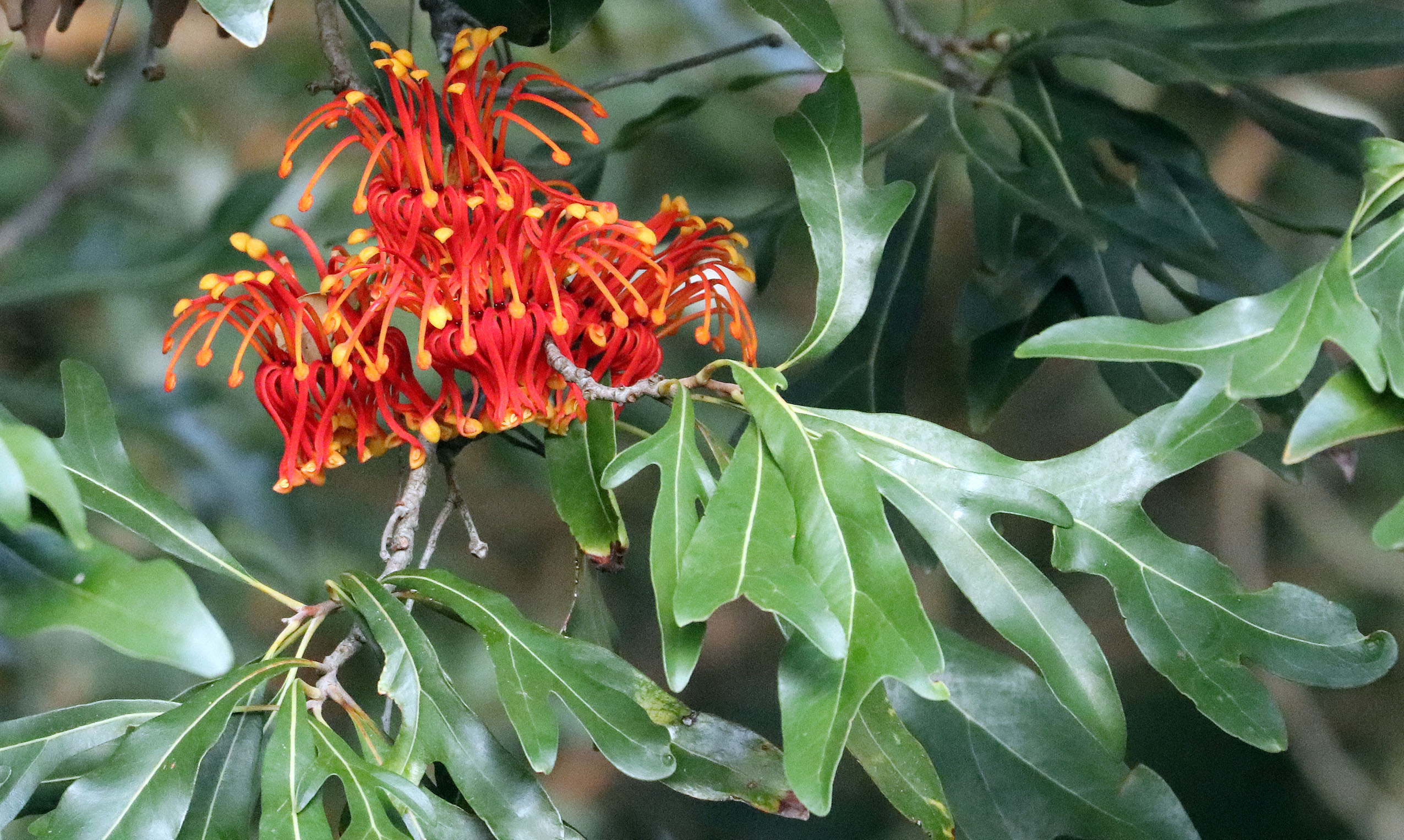 Stenocarpus spp.
Stenocarpus spp.One of the more infamous plants of the Australian and New Guinea rainforest is Dendrocnide moroides, 'Stinging Bush', or 'Gympie Gympie'. The small hairs on this plant cause extreme pain. Do not use these wide leaves as toilet paper!
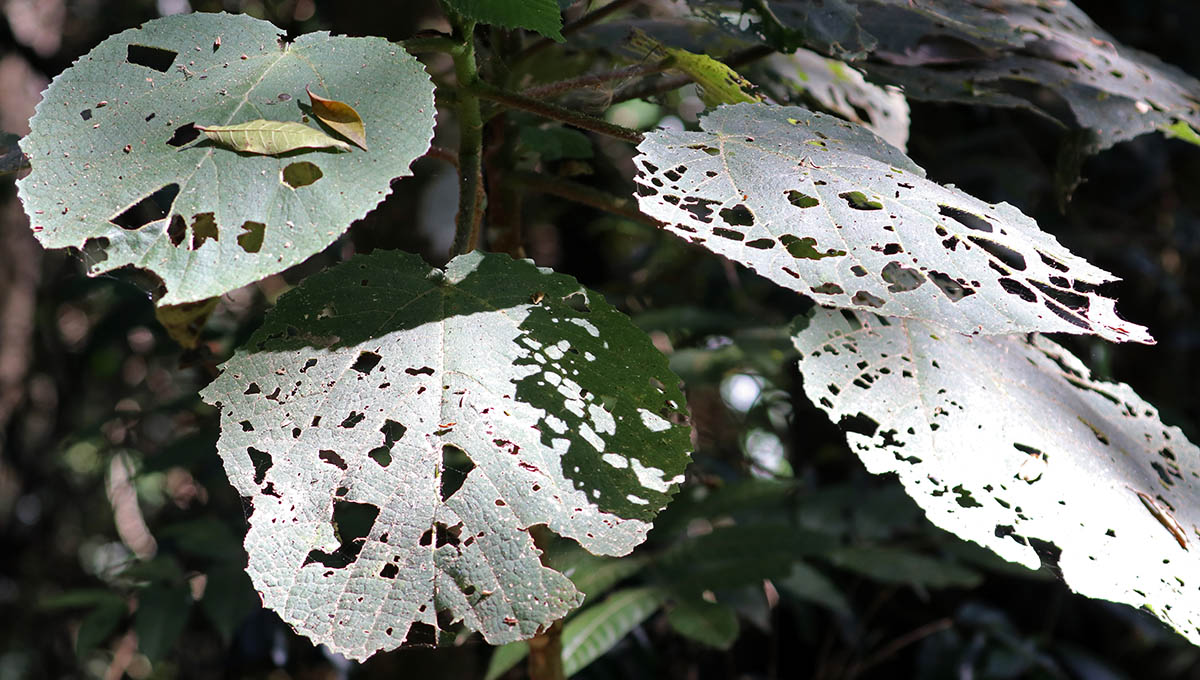 (Lamington National Park, Australia)
(Lamington National Park, Australia)The huge family Euphorbiaceae has over 6000 species spread over 250 genera, making it the fifth largest family of plants. They are found throughout the world, from tropical areas to temperate. On a global scale, the huge range of different species has few easily identifiable features. However, in the Australasian rainforests, many of the species in this family tend to have some features in common: they often have small not very colourful flowers, rounded or heart-shaped leaves, exudate or 'sap' when a branch is broken, and are commonly pioneer or edge species. There are over 150 species found in the Australian tropical rainforest, and they are often important 'pioneer' species, such as the Macarangas.
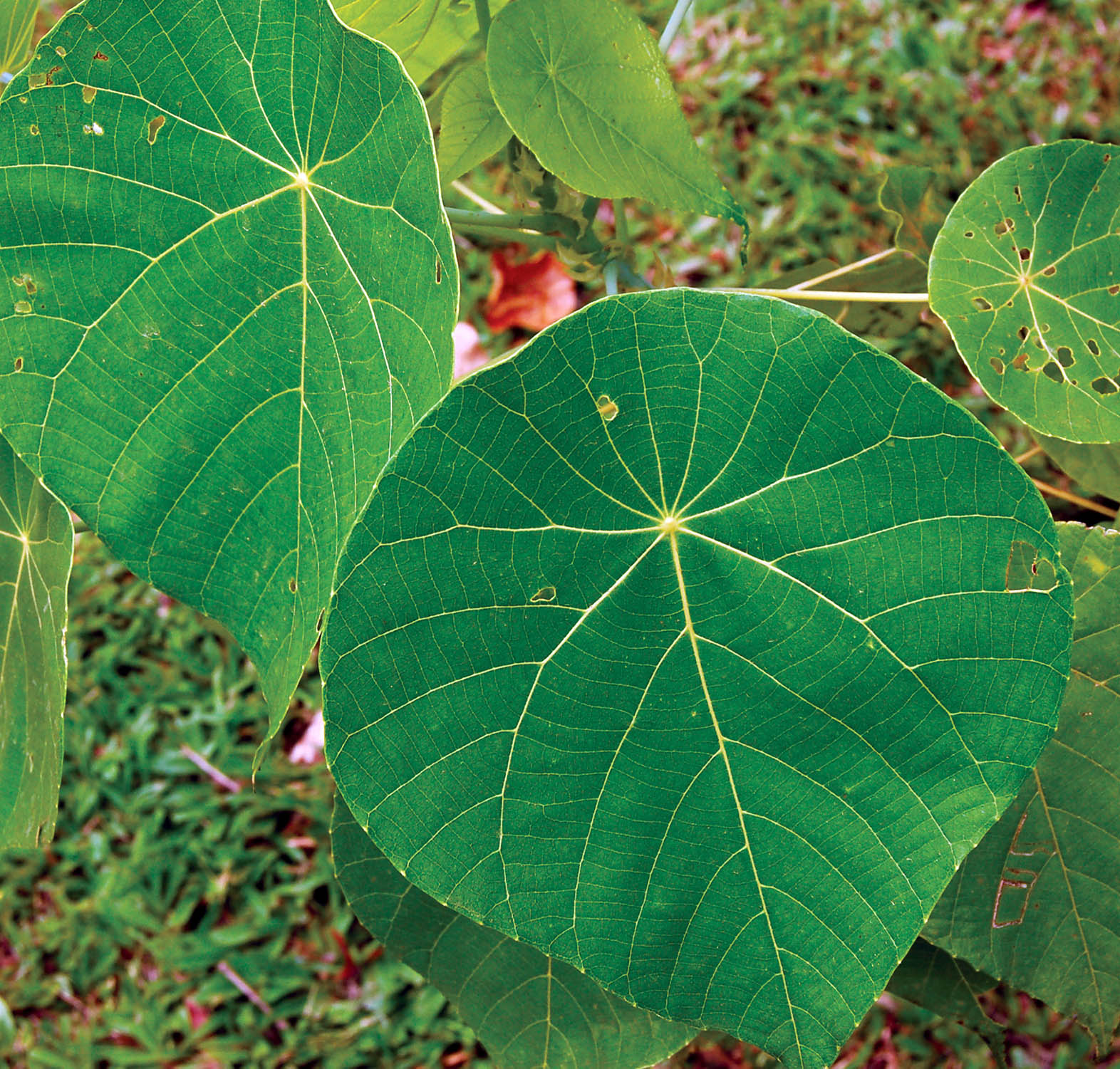 (Daintree, Queensland, Australia).
(Daintree, Queensland, Australia).The family Myrtaceae is arguably the most important on the Australian continent, although they are not as obvious in the rainforests as they are in the adjacent woodlands. The flowers in the Myrtaceae family are usually quite showy, but not in the usual way; instead of colourful petals, there is instead a seemingly unlimited number of stamens, giving the flower the appearance of a brush. Botanists often divide the family into two different sub-families. One group are the ‘woody-fruited myrtles’. These are dominant in drier parts of our continent, and include the classic Australian genera such as Eucalyptus and Melaleuca. Some Eucalypts do sneak into the forest, such as Eucalyptus grandis, 'Flooded Gum', 'Rose Gum'. (below). The other group, the ‘soft-fruited myrtles’ are usually associated with wetter environments and found mainly in the tropical rainforests of the Americas, Australia and parts of Asia and the Pacific. It includes such genera as Syzygium, Acmena and Eugenia, and are commonly known as the ‘Apples’, ‘Satin-ashes’ and ‘Lilly-pillies’ and usually produce fleshy, colourful fruits.
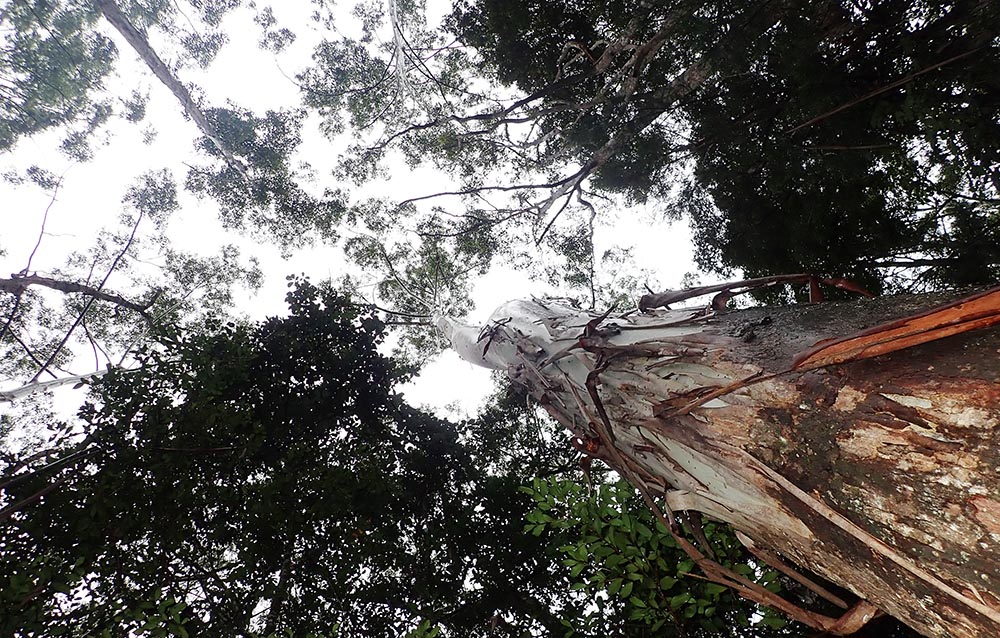 'Flooded Gum', 'Rose Gum'. (Atherton Birdwatching Lodge).
'Flooded Gum', 'Rose Gum'. (Atherton Birdwatching Lodge).In contrast to the introduced cockroaches, many native cockroaches are slightly less disgusting, The forests of north Queensland include the heaviest of all cockroaches! Macropanesthia rhinoceros, ‘Giant Burrowing Cockroach’. It is wingless, and the female feeds young on dead leaves dragged down into underground tunnels where it generally lives. They are not often seen in the wild: adults may only emerge after heavy rain. It is sold as a pet around the world.
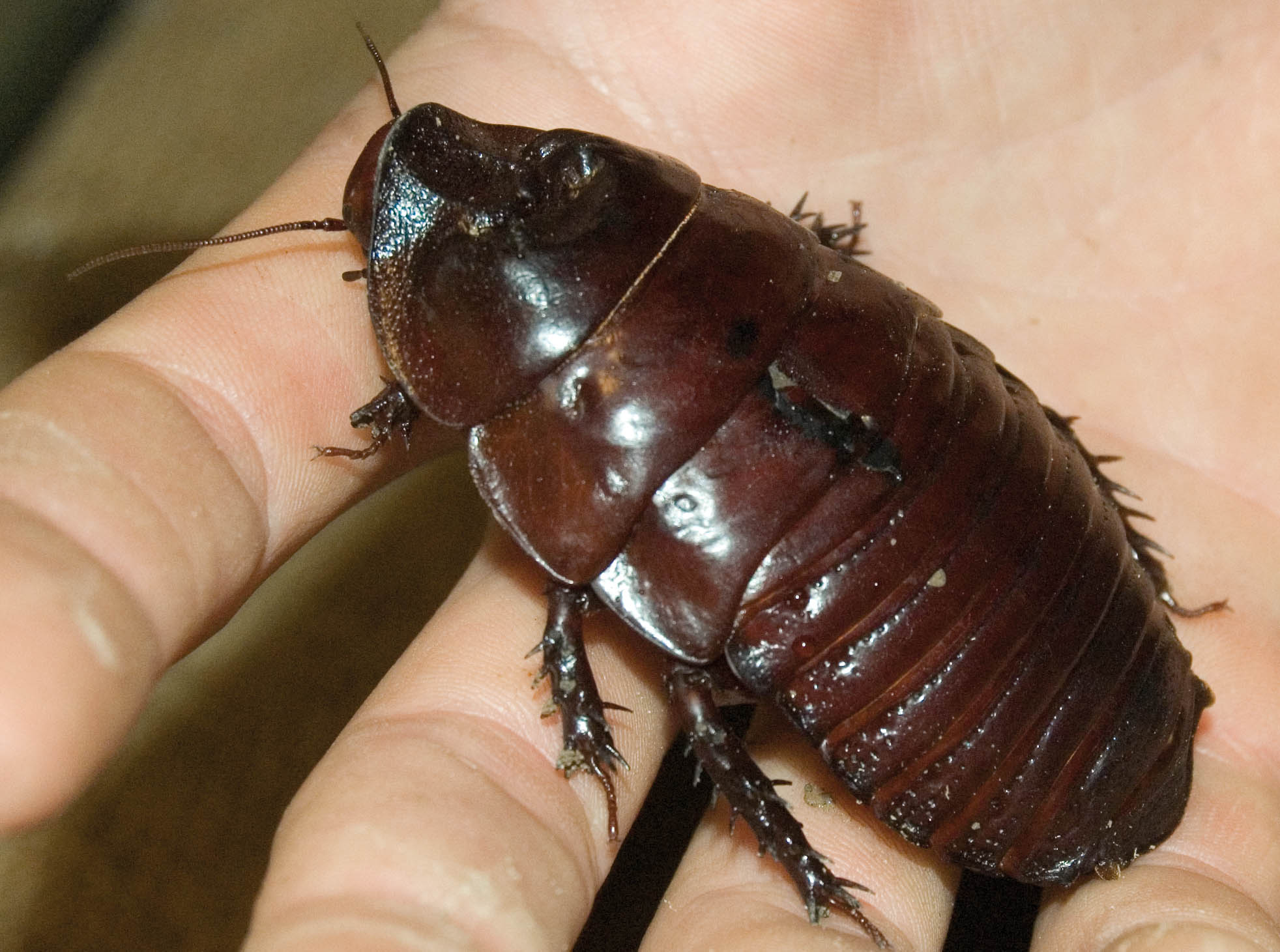
The insects of the order Orthoptera include the crickets and grasshoppers. Generally, the nocturnal crickets are duller coloured, while the diurnal grasshoppers can be brighter colours; however, in the tropical rainforest crickets are often colourful bright greens. One of the most strking groups are the ‘spiny crickets’ of the genus Phricta. They occur in forests along the east coast of Australia from NSW north, and are found on vegetation. Some of the tropical species can be large, have rainforest lichen camouflage colours, and be elaborately spiny, and are thus sometimes called ‘Wait-a-while crickets’. When disturbed, they are reported to turn around with their rear towards the threat and flick their spiny legs out as a defence. Generally, however, they are harmless leaf eaters.
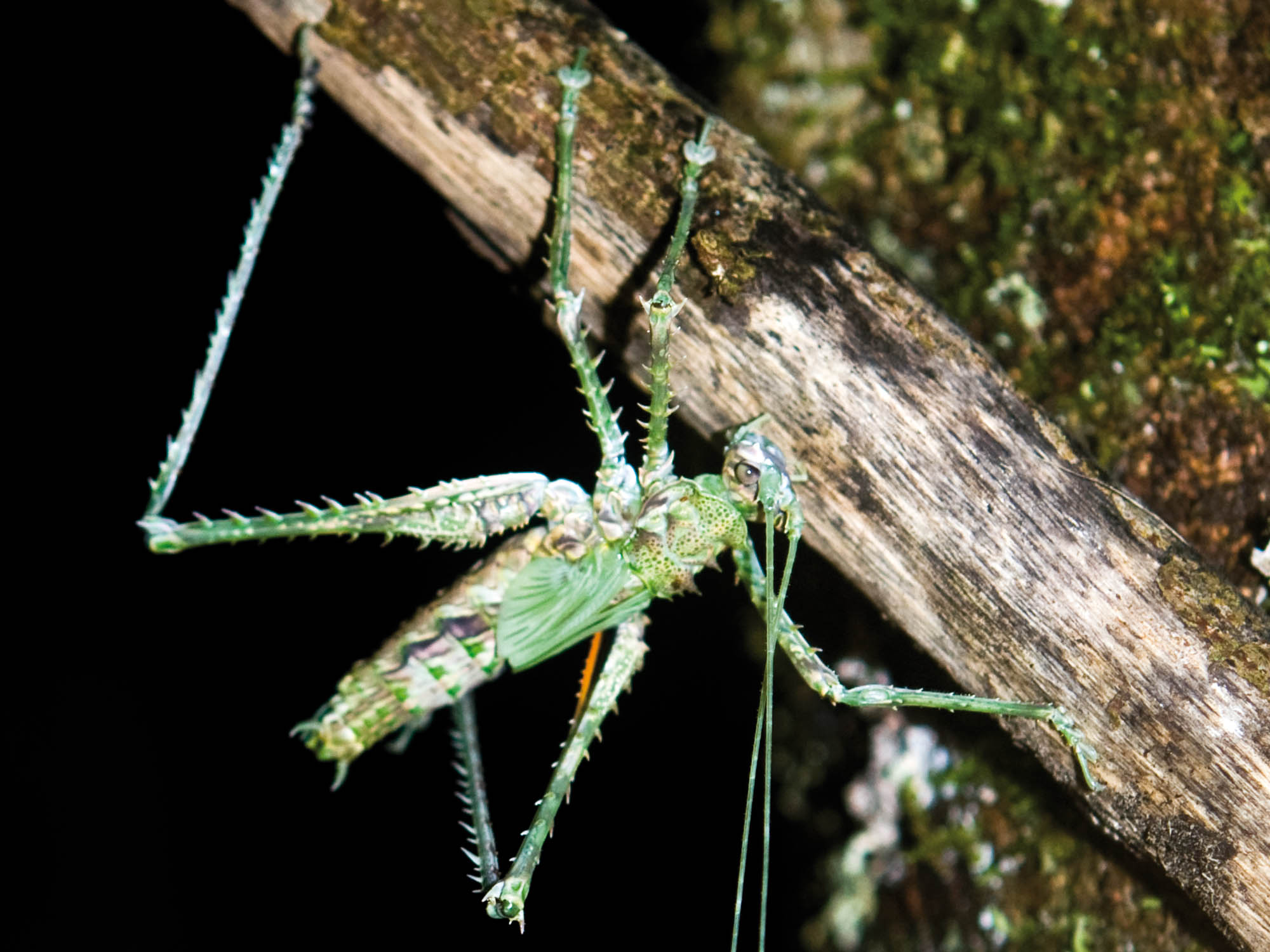
The order Phasmatodea contains the 'Stick Insects'. Below is Eurycantha calcarata, 'Thorny Devil Stick Insect', 'Giant Stick Insect', which is found in New Guinea, Solomon Islands and New Caledonia.
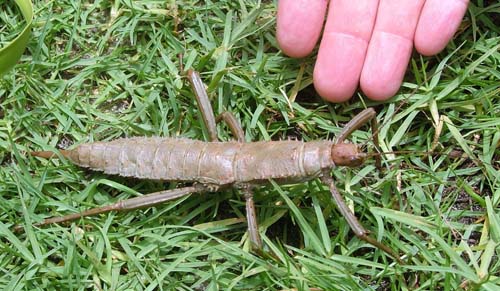
Butterflies and moths around the world reach their highest diversity in the warm and wet lowland rainforest, and it is no different in Australia. Of the over 400 species of butterflies found in Australia, nearly half of them are associated with the various types of rainforest in the northern and eastern parts of the continent, with the lowland rainforests of North Queensland and Cape York Peninsula generally considered the areas of highest diversity for butterflies. As one travels further north into equatorial New Guinea, the diversity increases.
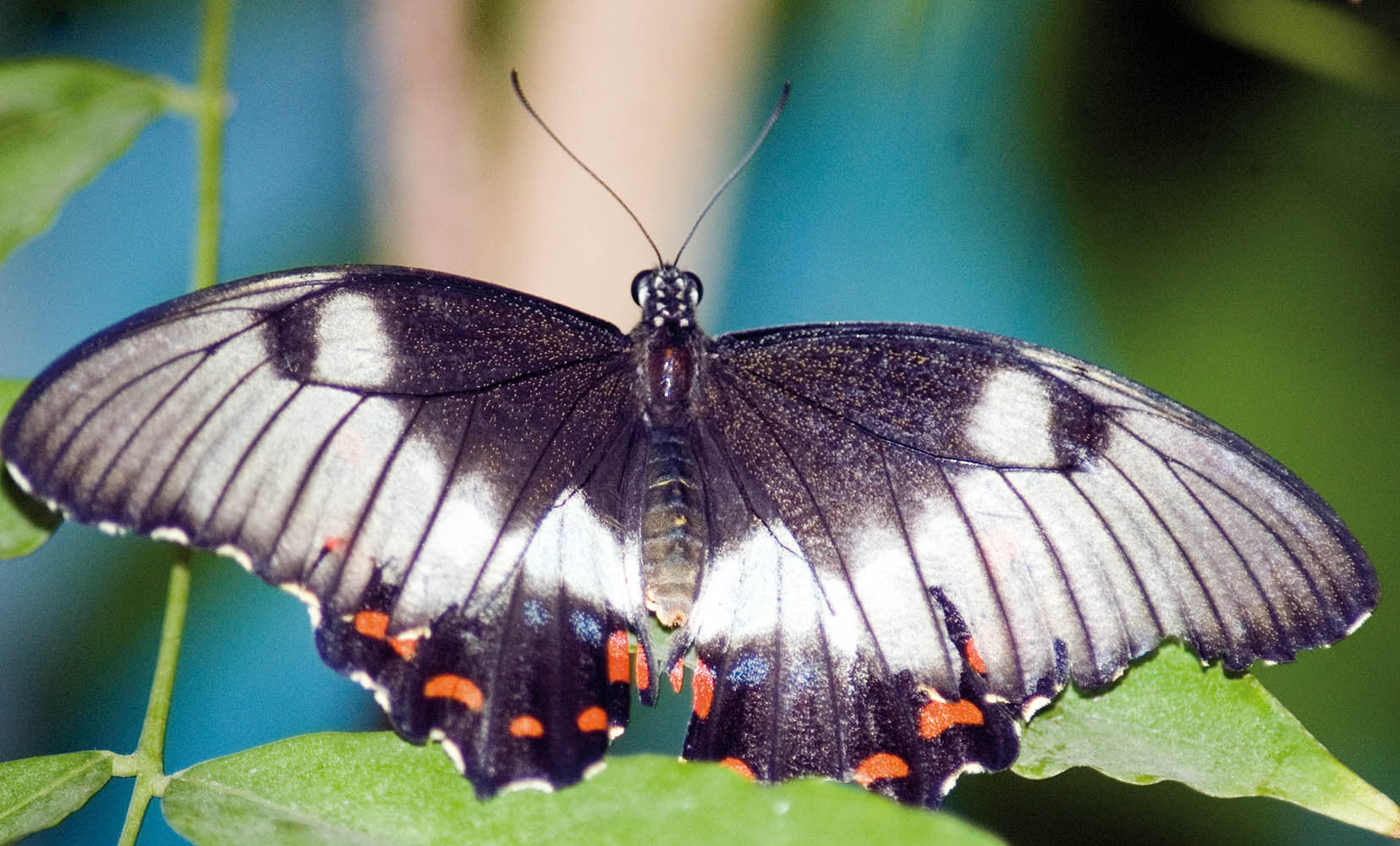
'Birdwing Butterflies' are centred mainly in New Guinea, but also extend north into tropical Asia and south along the east coast of Australia. In the rainforest of New Guinea, there are species of Birdwing that are the largest of all butterflies. At some flowering plants, larger individual birdwings are larger than native birds such as sunbirds and Myzomela honeyeaters. Birdwings frequently glide and are often high up in the canopy.
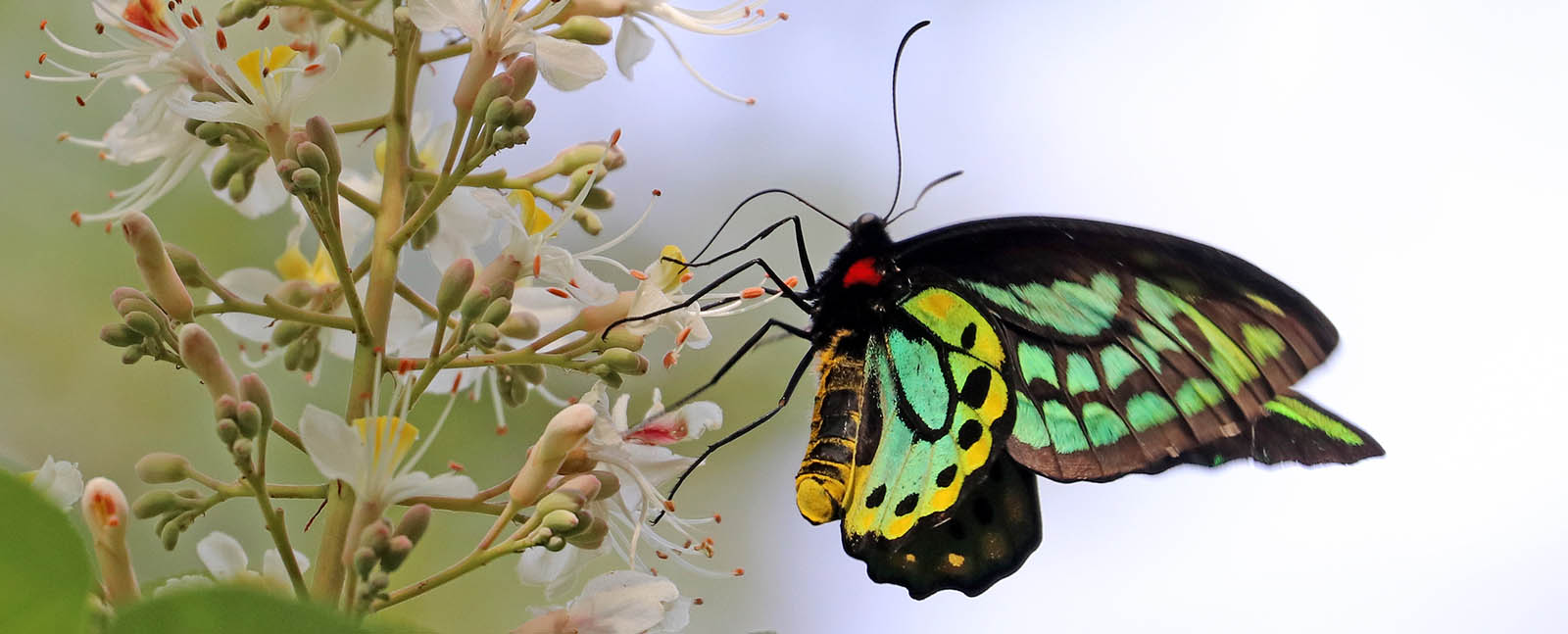 'Richmond Birdwing Butterfly', (O'Reillys, Lamington National Park, Australia)
'Richmond Birdwing Butterfly', (O'Reillys, Lamington National Park, Australia)Being able to fly means that many of the butterflies found in tropical Australasia are also distributed in the Wallacean and Indo-Malayan regions. However, there are some groups that have speciated in New Guinea, such as the 'Jezebels' Delias spp. and also the 'Owl Butterflies' of the Taenaris genus. These small but striking butterflies are usually distinguished by a pair of orange ringed circles with black and white pupils on a contrasting white underside of the wings. The caterpillar larvae feed mostly on the toxic leaves of cycads.
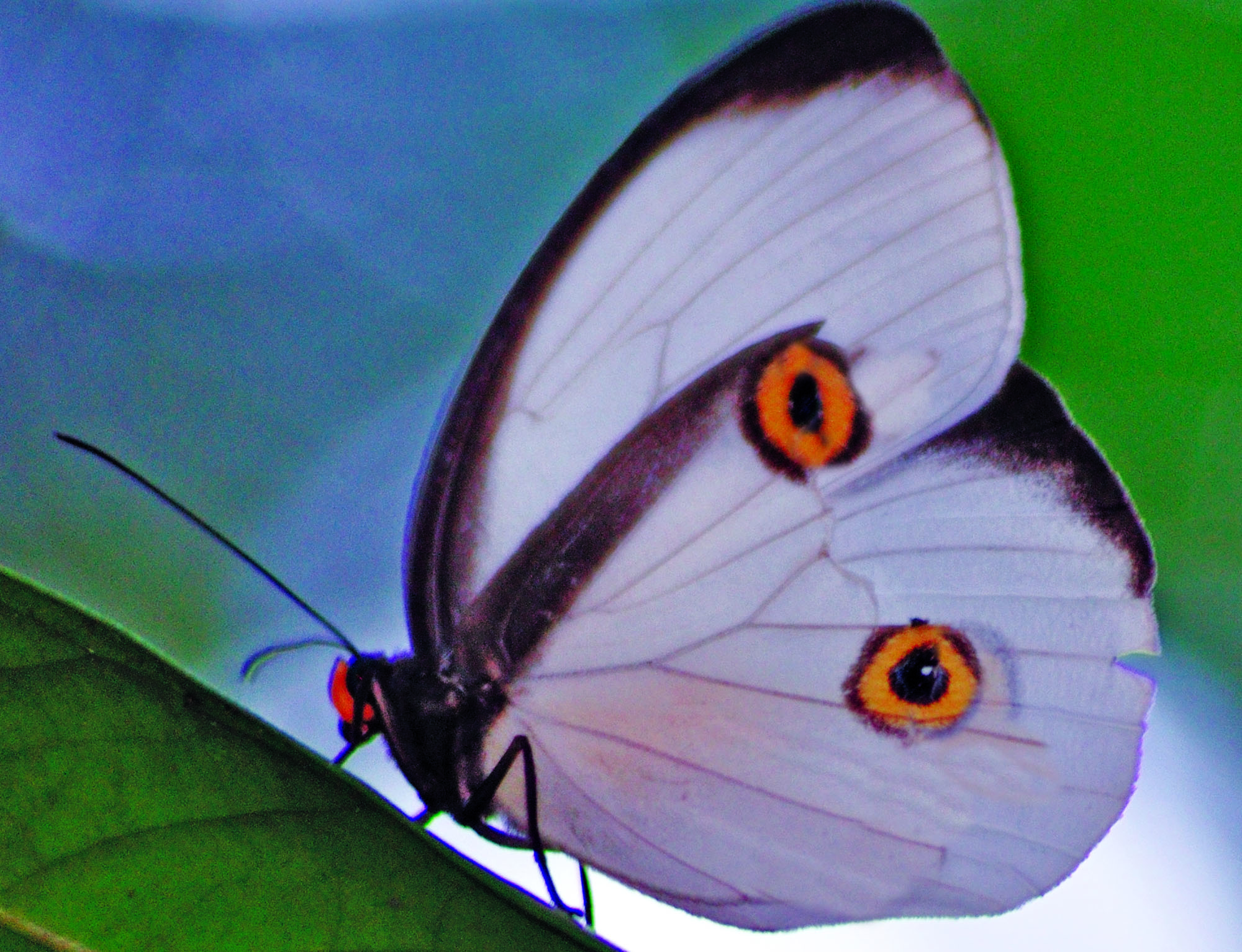
For the page on the reptiles of the Australasian rainforest

The largest birds in the Australasian rainforest, (indeed, in any rainforest on the planet) are the Cassowaries of the family Casuariidae. There are three species; they are all found in New Guinea, with one species also found in north-east Australia.
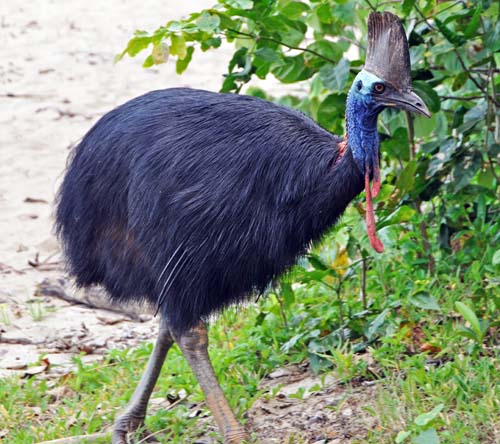 'Southern/Double-wattled Cassowary', (Etty Bay, Australia)
'Southern/Double-wattled Cassowary', (Etty Bay, Australia)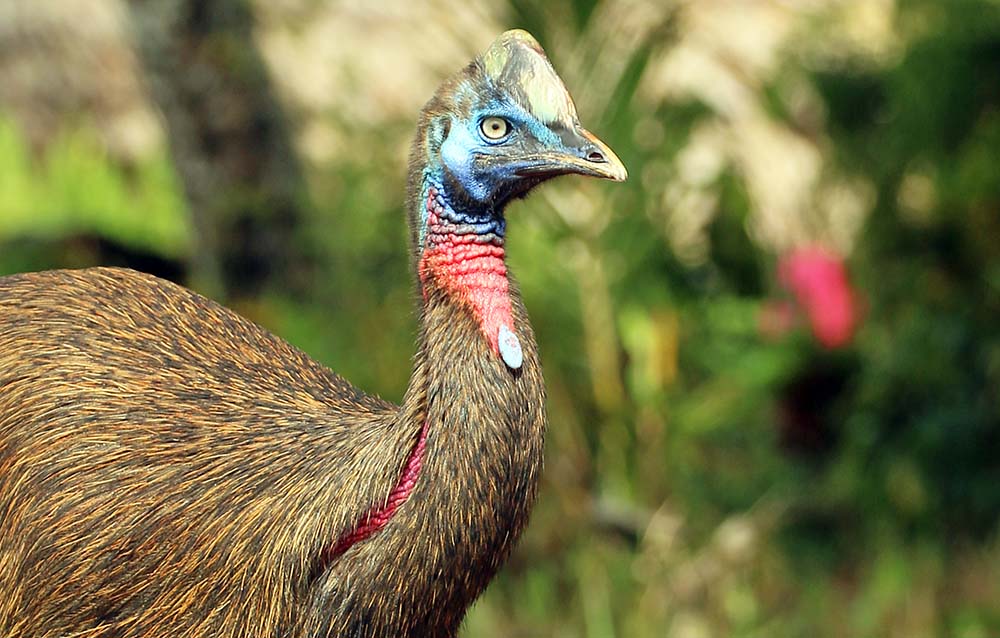 'Northern/Single-wattled Cassowary' juvenile, (Sepik River, Papua New Guinea)
'Northern/Single-wattled Cassowary' juvenile, (Sepik River, Papua New Guinea)The family Megapodiidae are mostly found in the Australasian region (with some spilling into Wallacea), and consist of large ground dwelling birds. The most distinctive feature of most species is their creation of huge mounds of decomposing vegetation to incubate their eggs.
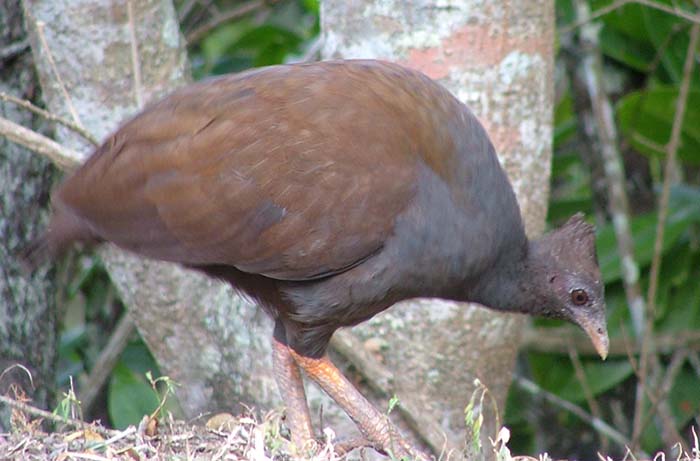 'Orange-footed Scrubfowl', (Cairns Botanical Gardens, Australia).
'Orange-footed Scrubfowl', (Cairns Botanical Gardens, Australia).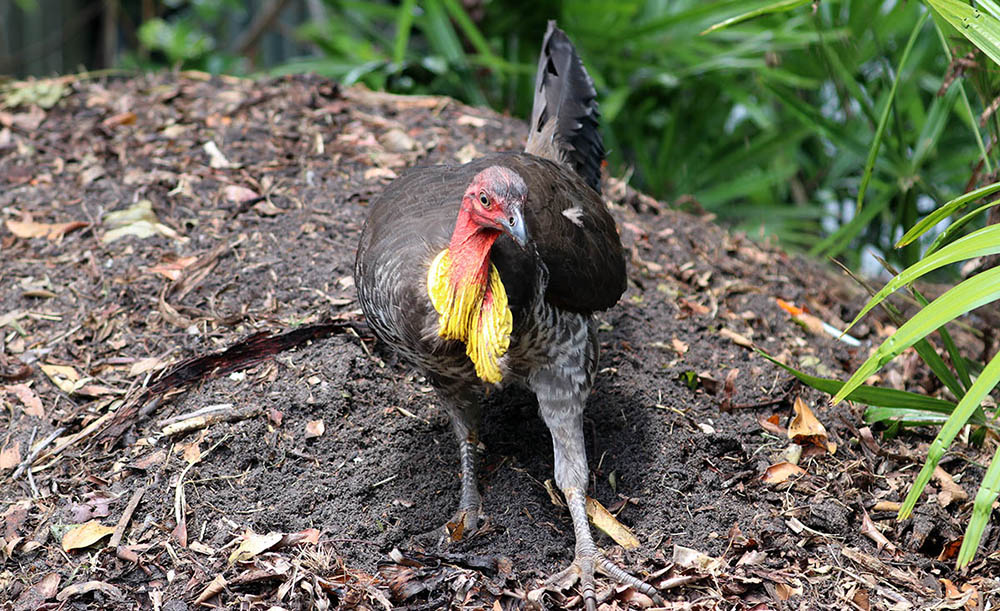 'Australian Brush Turkey', (Maroochydoore).
'Australian Brush Turkey', (Maroochydoore).The family Columbidae contains the world wide distributed doves & pigeons. While most people are familiar with the ubiquitous 'feral pigeon' of towns and cities, the rainforest of Australasia, especially the coast and islands of the south west pacific, have a wonderful range of the most colourful pigeons on the planet.
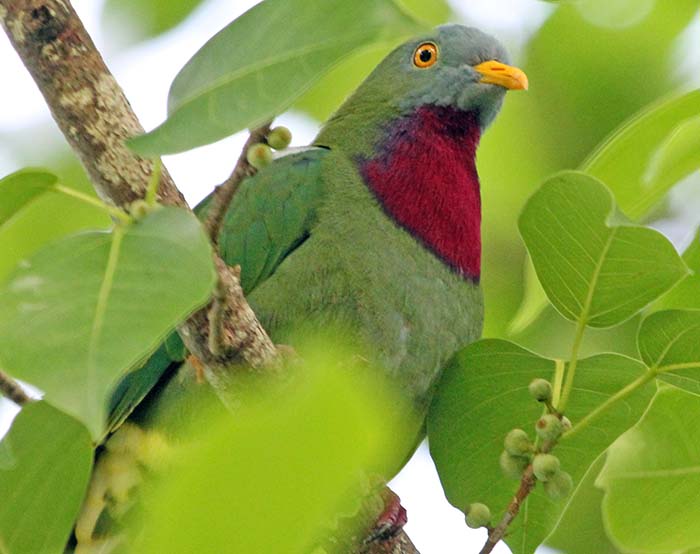 'Claret-breasted Fruit Dove', (Maravagi, Solomon Islands).
'Claret-breasted Fruit Dove', (Maravagi, Solomon Islands).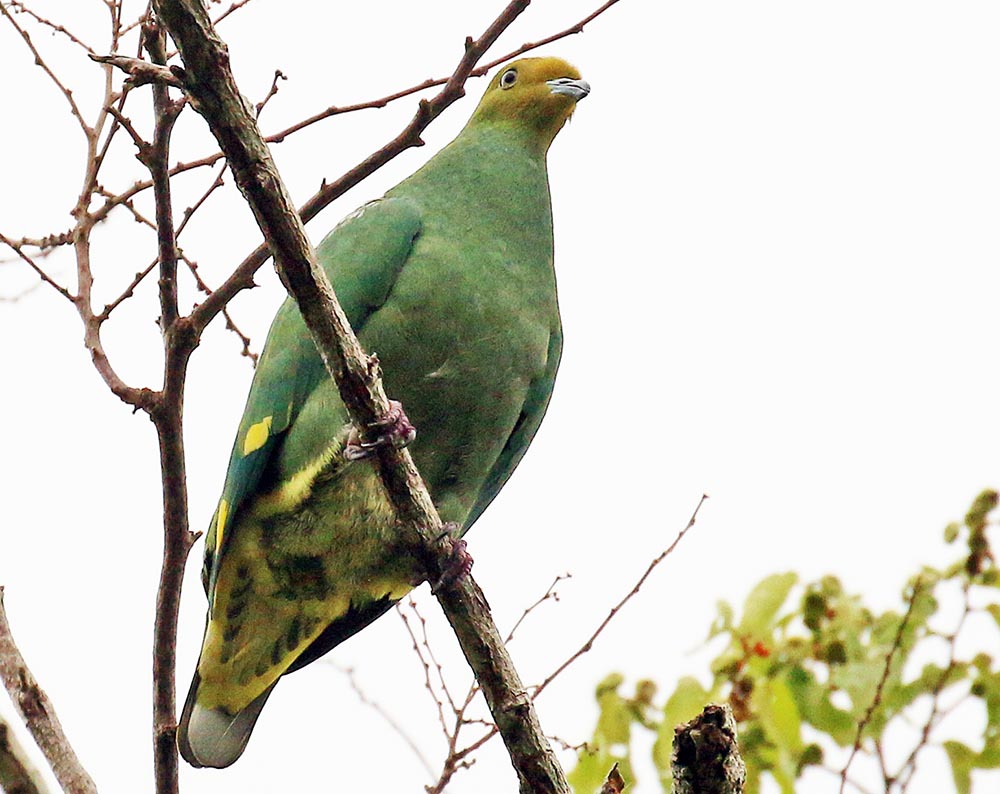 'Tanna Fruit Dove', (Espiritu Santo, Vanuatu)
'Tanna Fruit Dove', (Espiritu Santo, Vanuatu)The rainforest of Australia, New Guinea, and the islands of the tropical south-west Pacific have a range of big beautiful parrots.
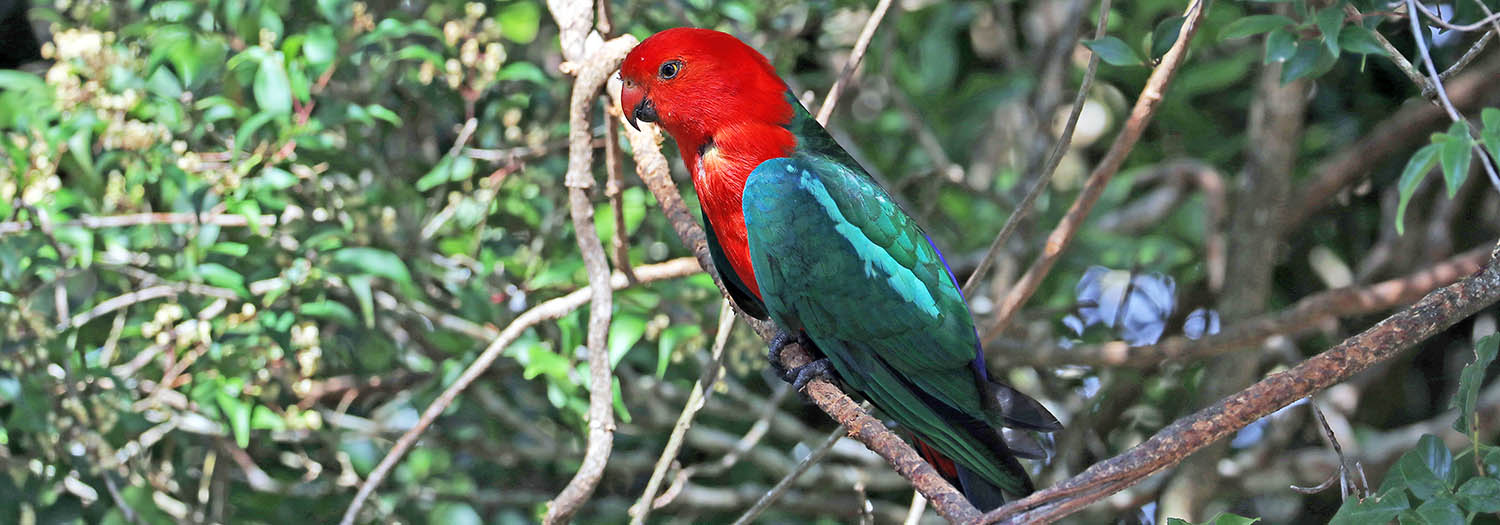 'Australian King Parrot', (O'Reilly's Lodge parrot feeding area, Australia)
'Australian King Parrot', (O'Reilly's Lodge parrot feeding area, Australia)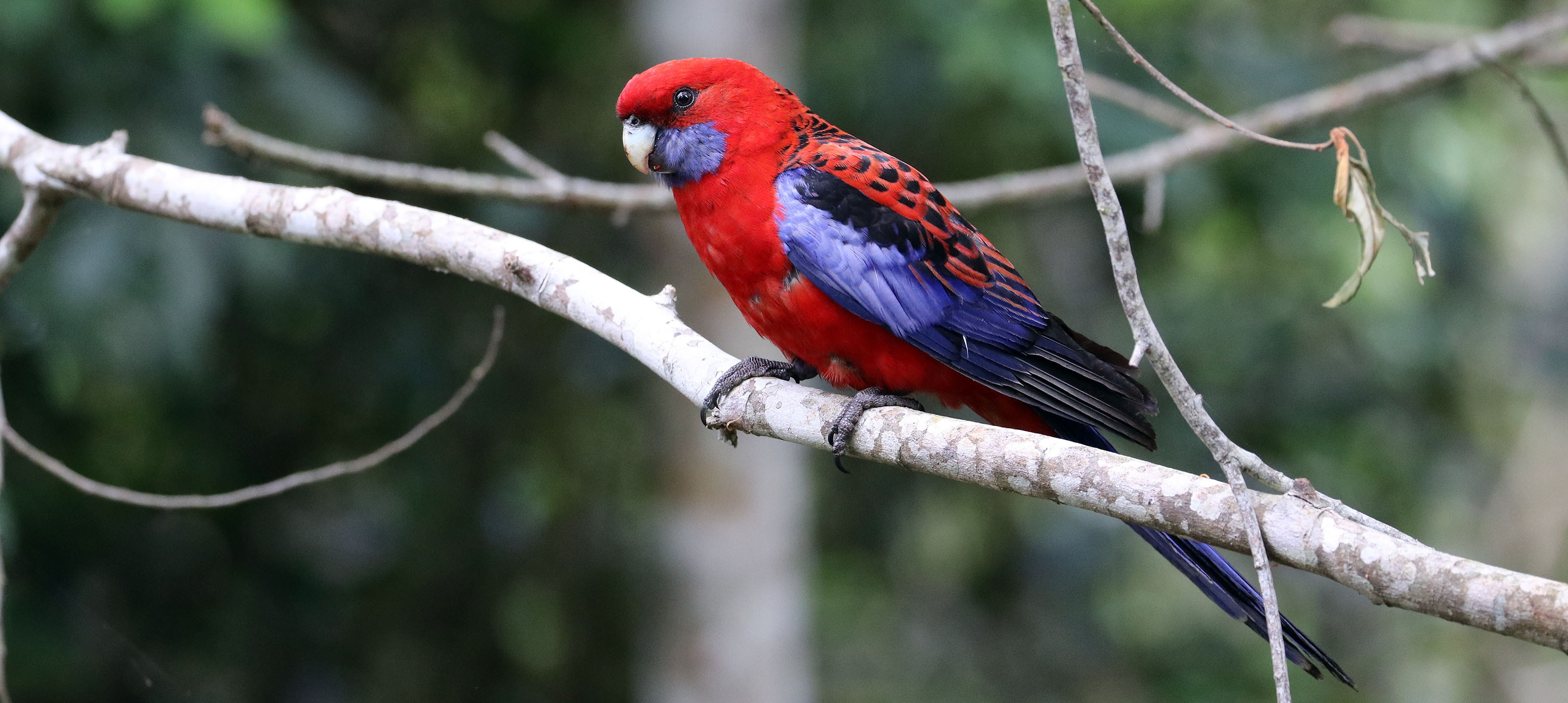 (O'Reilly's)
(O'Reilly's)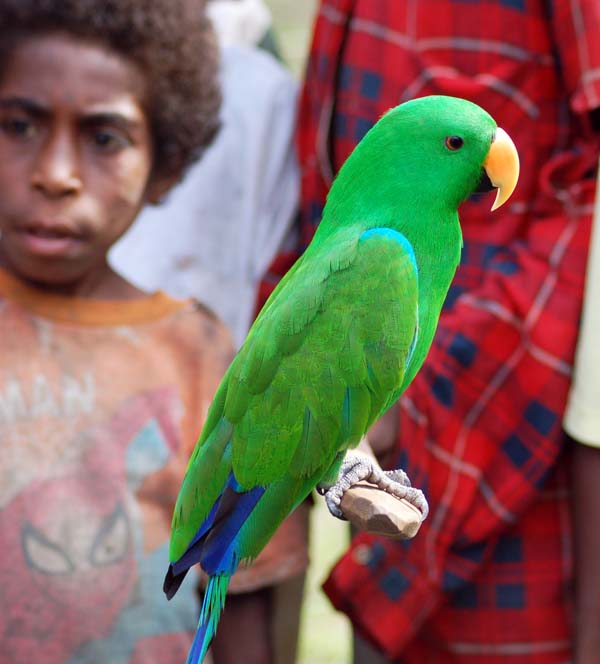 male 'Eclectus Parrot' (Sepik River, Papua New Guinea)
male 'Eclectus Parrot' (Sepik River, Papua New Guinea)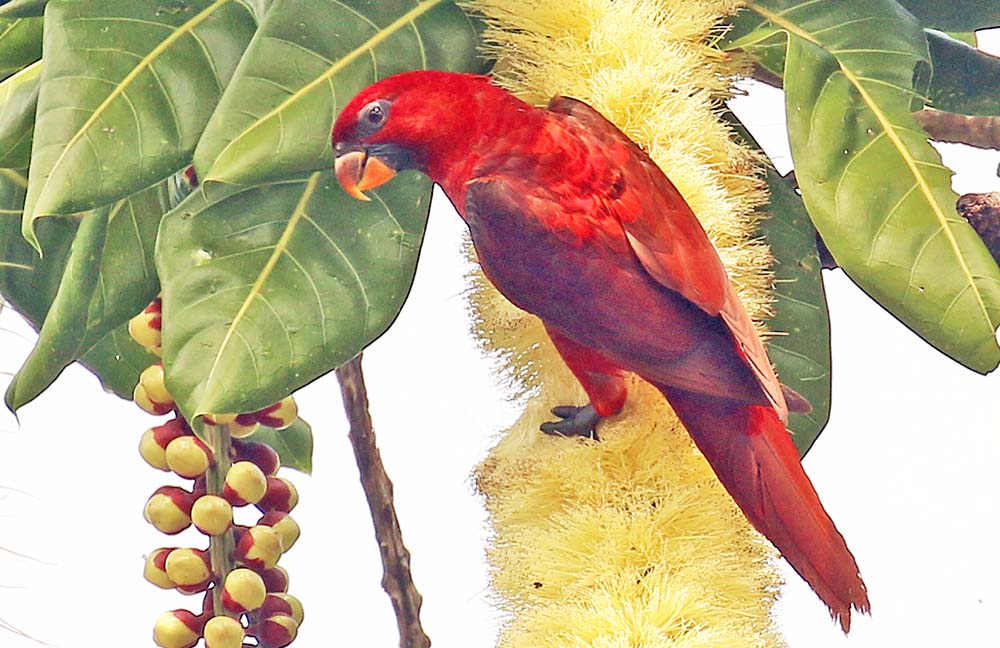 'Cardinal Lorikeet', (Marovo Lagoon, Solomons).
'Cardinal Lorikeet', (Marovo Lagoon, Solomons).For the page on passerine songbirds of the Australasian rainforest
 (O'Reilly's)
(O'Reilly's)The name ‘possum’ is a fairly vague and not very scientific term. Other than both being marsupials, the Australian/New Guinea ‘Possums’ are not closely related to the American/Neotropical ‘Opossums’. And in fact, within Australia, the term ‘Possum’ actually covers a few quite different families of animals. There are three main groups: the gliders, the ringtails, and the brushtails.
The Brushtail Possum family includes the ‘cuscus’. They usually have much smaller ears than their brushtail relatives. They are found mainly in New Guinea, but several species also live in the surrounding islands of the south-west Pacific, and there are 2 species found in the forests of the Cape York region of Australia.
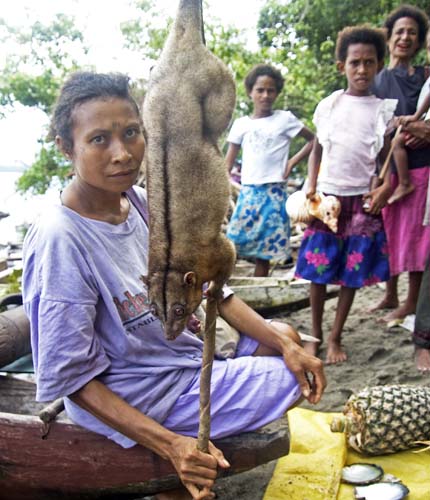
This Ringtail Possum family includes at least 15 species in a range of genera. They are found in New Guinea, Australia, and some surrounding islands, with 7 species in Australia. They are not generally quite as wide ranging in their diet as other possums, such as the gliders and brushtails. They may feed on fruits and flowers, but generally the bulk of their diet is leaves. This results in ‘ringtails’ being more sluggish and appearing rather ‘dopey’, although many are capable of energetic leaps within the canopy. However, they are excellent climbers with strongly prehensile tails. They are also usually quieter than many other possums; their less reliance on vocalization in communication is reflected in their smaller ears. Ringtails are found in a variety of habitats in Australasia and surrounding islands, although they have a tendency to be more of a closed forest possum than the ‘gliding possums’ and the occasionally terrestrial ‘brushtails’. They have speciated most in the higher altitude rainforest of New Guinea and north-east Queensland.
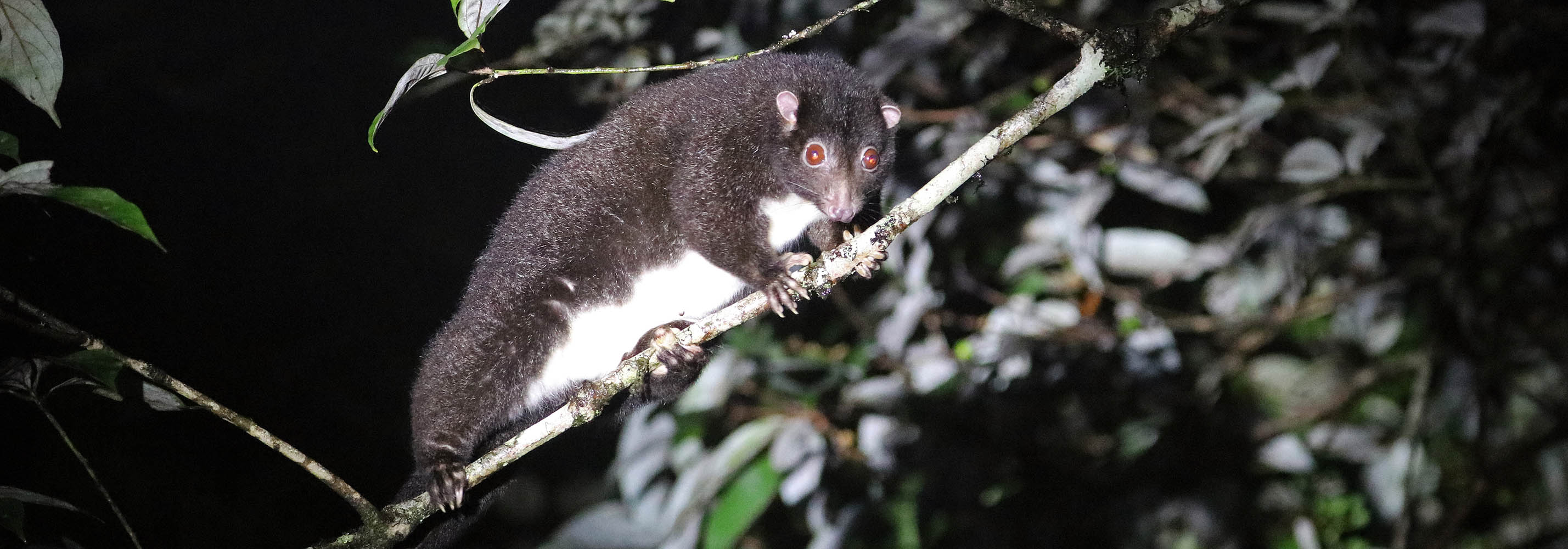 'Herbert River Ringtail', (Possum Valley, Queensland)
'Herbert River Ringtail', (Possum Valley, Queensland)Around the world, the rodents are usually the most diverse group. In the Australasian rainforests there are many endemic species, including:
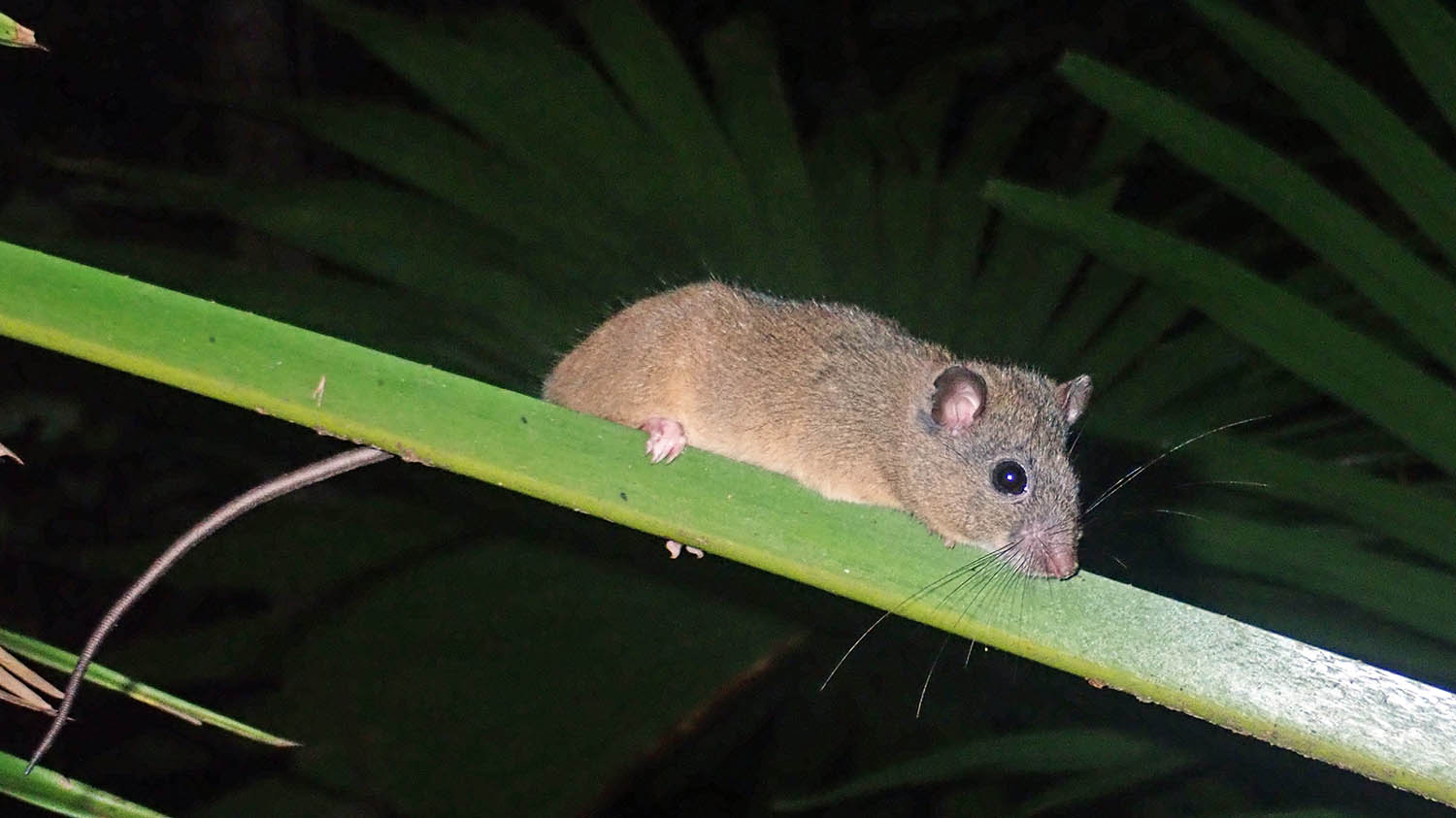 'Fawn-footed Melomys', (Broken River, Eungella, Australia)
'Fawn-footed Melomys', (Broken River, Eungella, Australia)One of the more common and noisy mammals around rainforest in Australia and New Guinea are the flying fox or fruit bats. They often roost in large colonies around areas of human habitation, even in trees in busy urban areas. On the nearby islands of the south-west Pacific region, they are often the only native mammal.
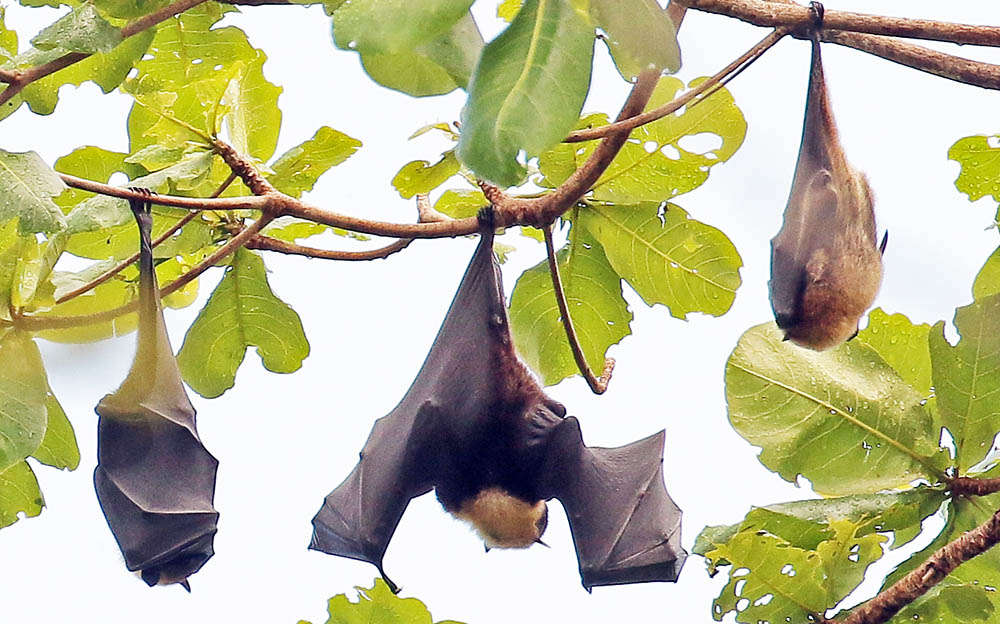 'Insular/Pacific Flying Fox', (Lautoka, Taveuni, Fiji)
'Insular/Pacific Flying Fox', (Lautoka, Taveuni, Fiji)Places to experience the Australasian rainforest
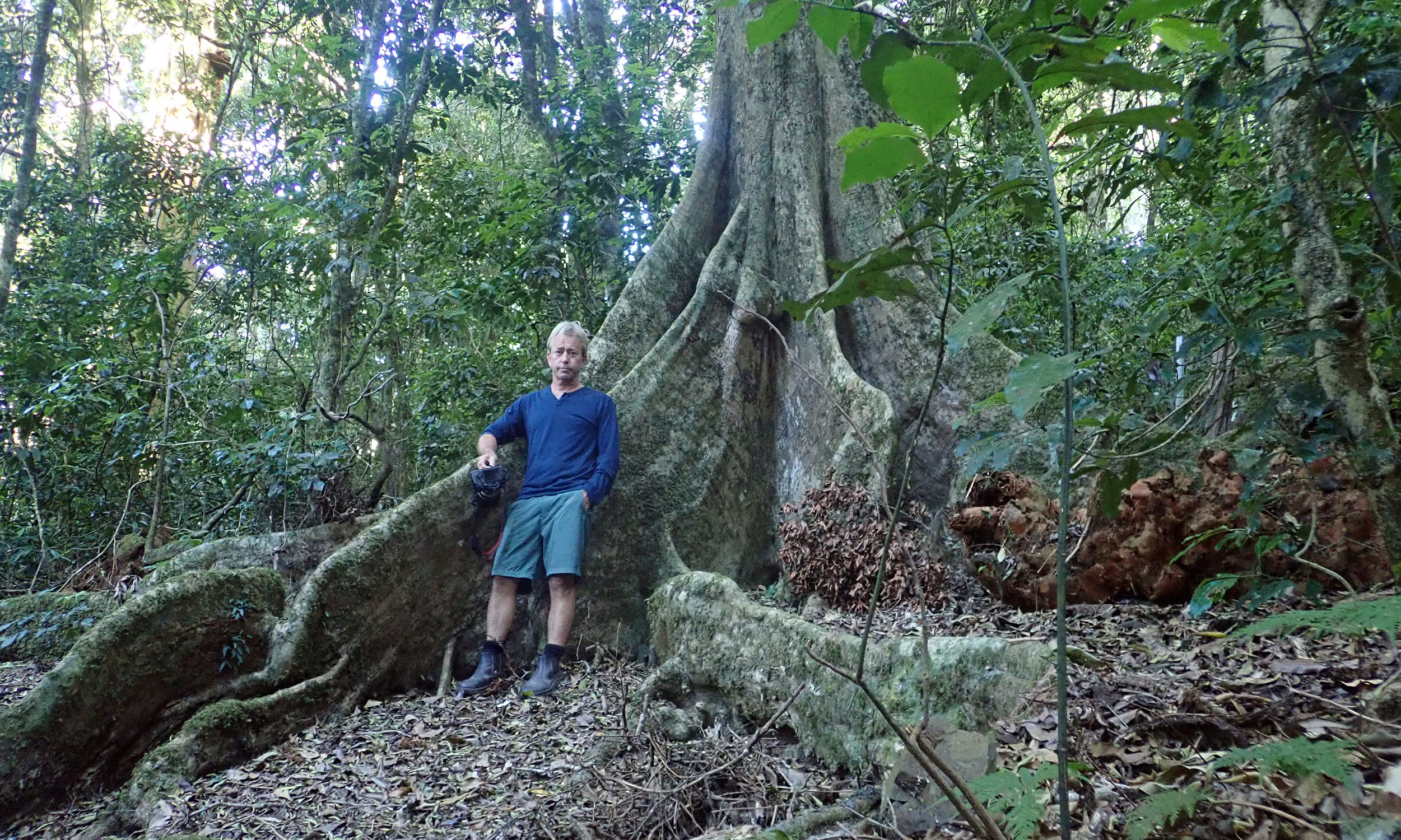 The author next to a big buttress tree in the Australian rainforest, (O'Reillys Lodge, Queensland, Australia, 2021)
The author next to a big buttress tree in the Australian rainforest, (O'Reillys Lodge, Queensland, Australia, 2021)For a chance to stay in and explore the beautiful subtropical rainforest, there is the famous O'Reillys Lodge, with easy and great birdwatching, located in south-east Queensland, Australia. Further north is the centre of rainforest excursions in Australia, Cairns, Queensland. While in the town, there is the Cairns Botanical Gardens and for captive wildlife: Cairns Tropical Zoo. South of here is Mission Beach and Etty Bay, the best places to see Cassowary. North of Cairns is the Daintree Australia, not as good as the tablelands is for wildlife, but it is beautiful lowland rainforest, and includes the Daintree Discovery Centre. The Atherton Tablelands is the best place for birdwatching, and there are great value places to stay, including: the Atherton Tablelands Birdwatchers Cabin, Possum Valley, and the grand master himself: Chambers Rainforest Apartments Australia. Higher up in altitude is the national park of Hypipamee Crater, great for spotlighting nocturnal mammals.
The islands of Melanesia offer some relatively unspolit tropical rainforest. This includes the Arnavon (Arnarvon) Islands, and Marovo Lagoon. And then there is the largest and least known rainforest in Australasia, the jungle of Papua New Guinea. You can check out the relatively unknown Damawewe Caves, and in the north is the amazing Sepik River, great for culture and birdlife (if you can get there). The Indonesia half of New Guinea is getting more developed but areas such as Rajah Ampat are still well protected, including Gam Island, for Red Bird-of-Paradise., and Misool Island.